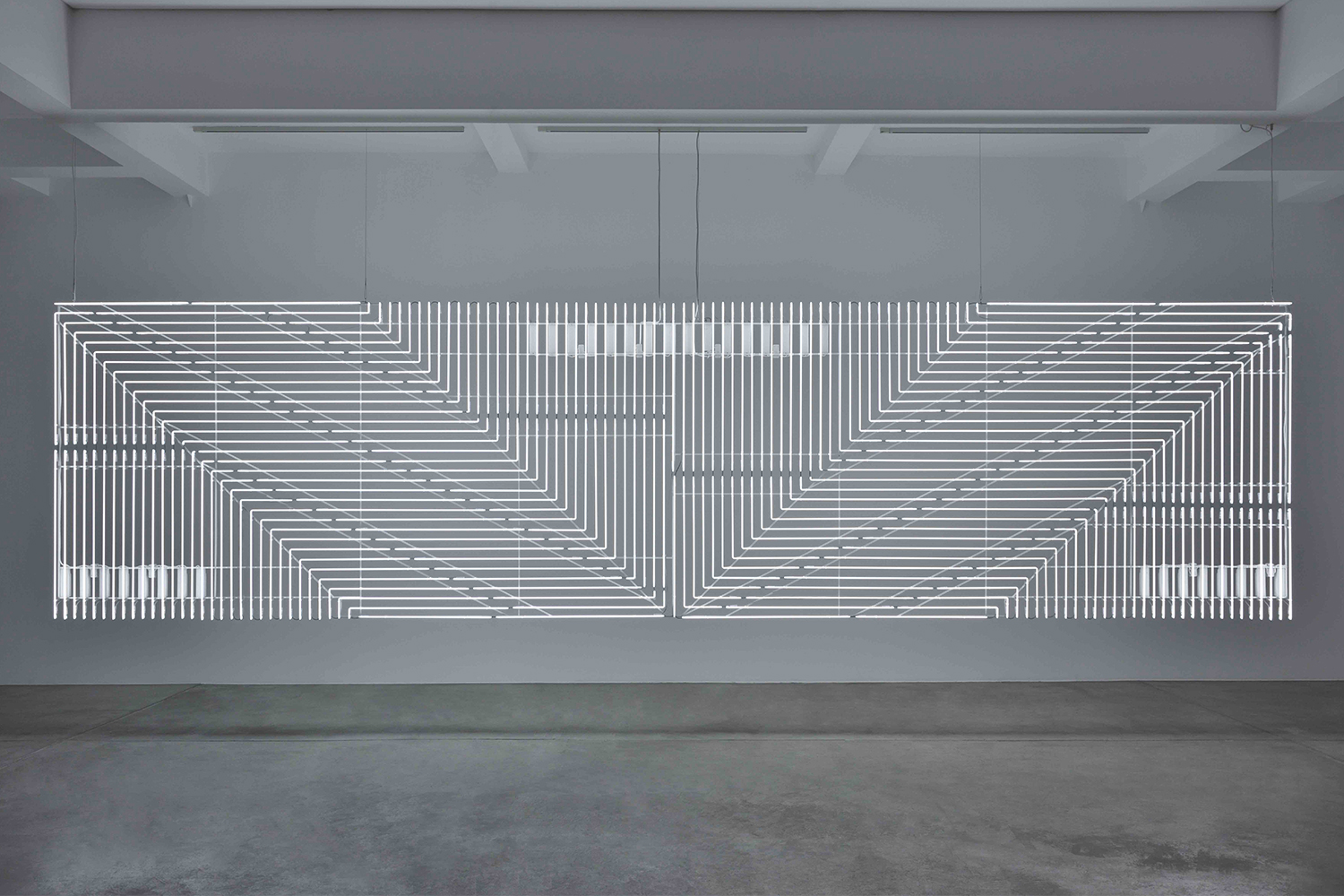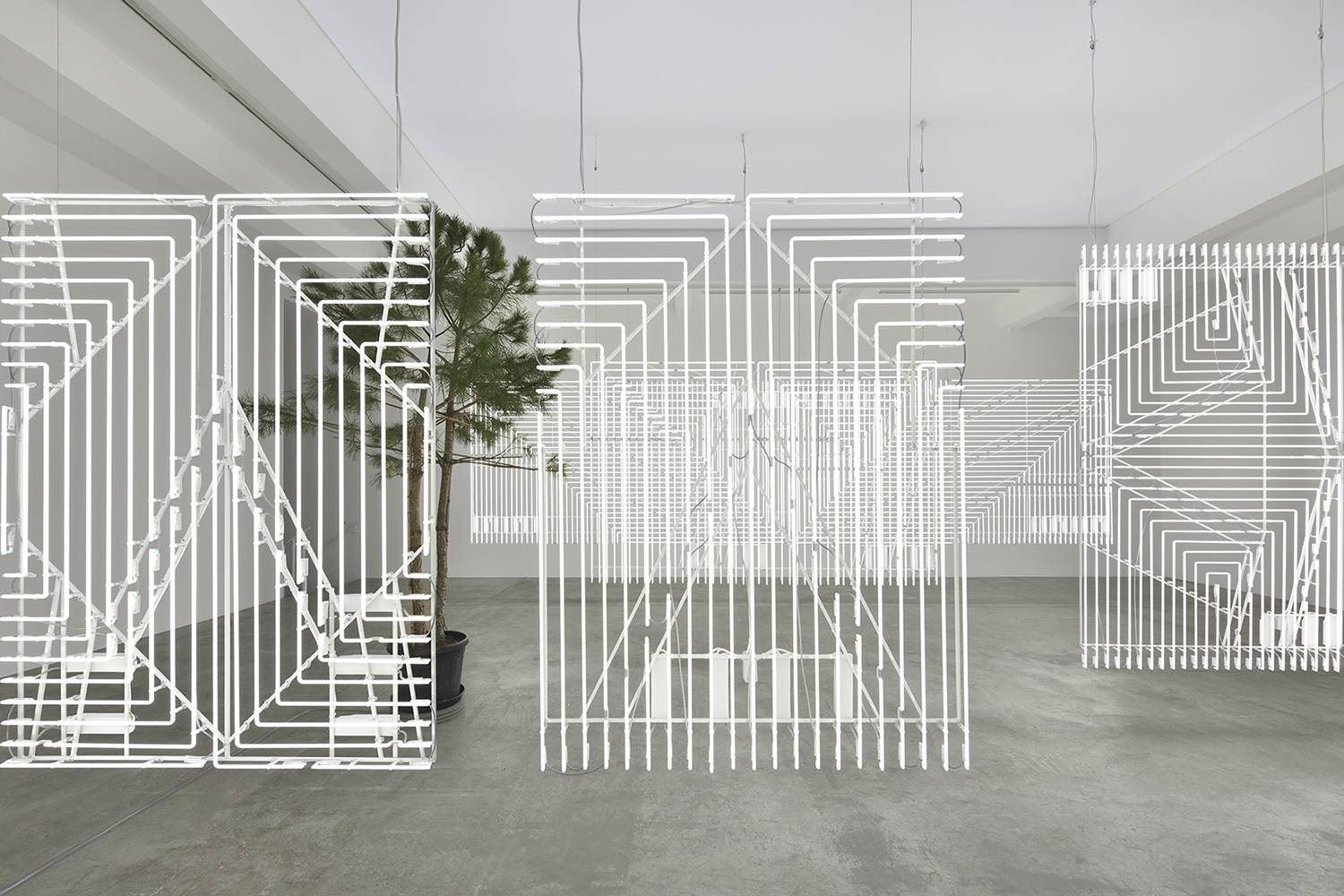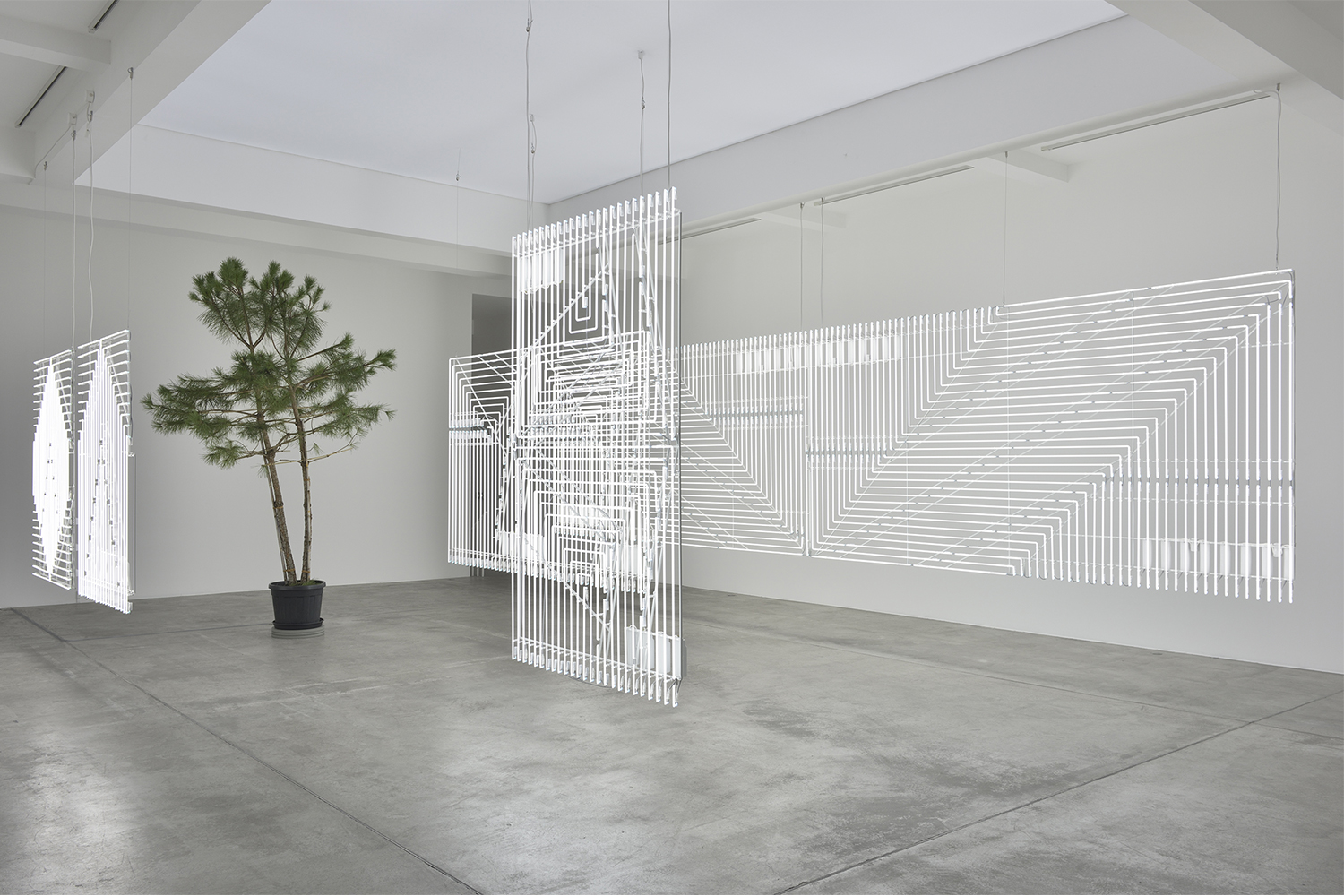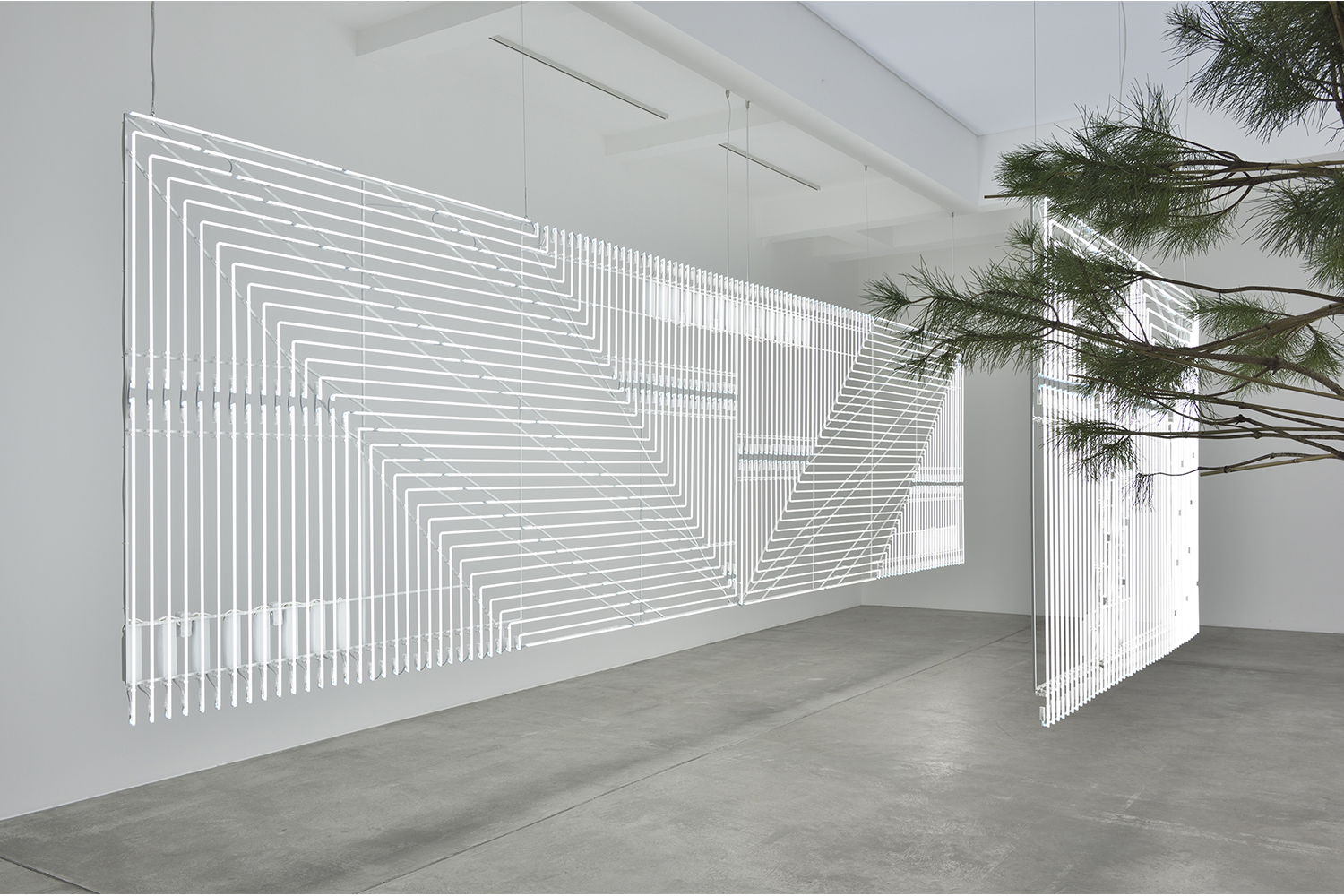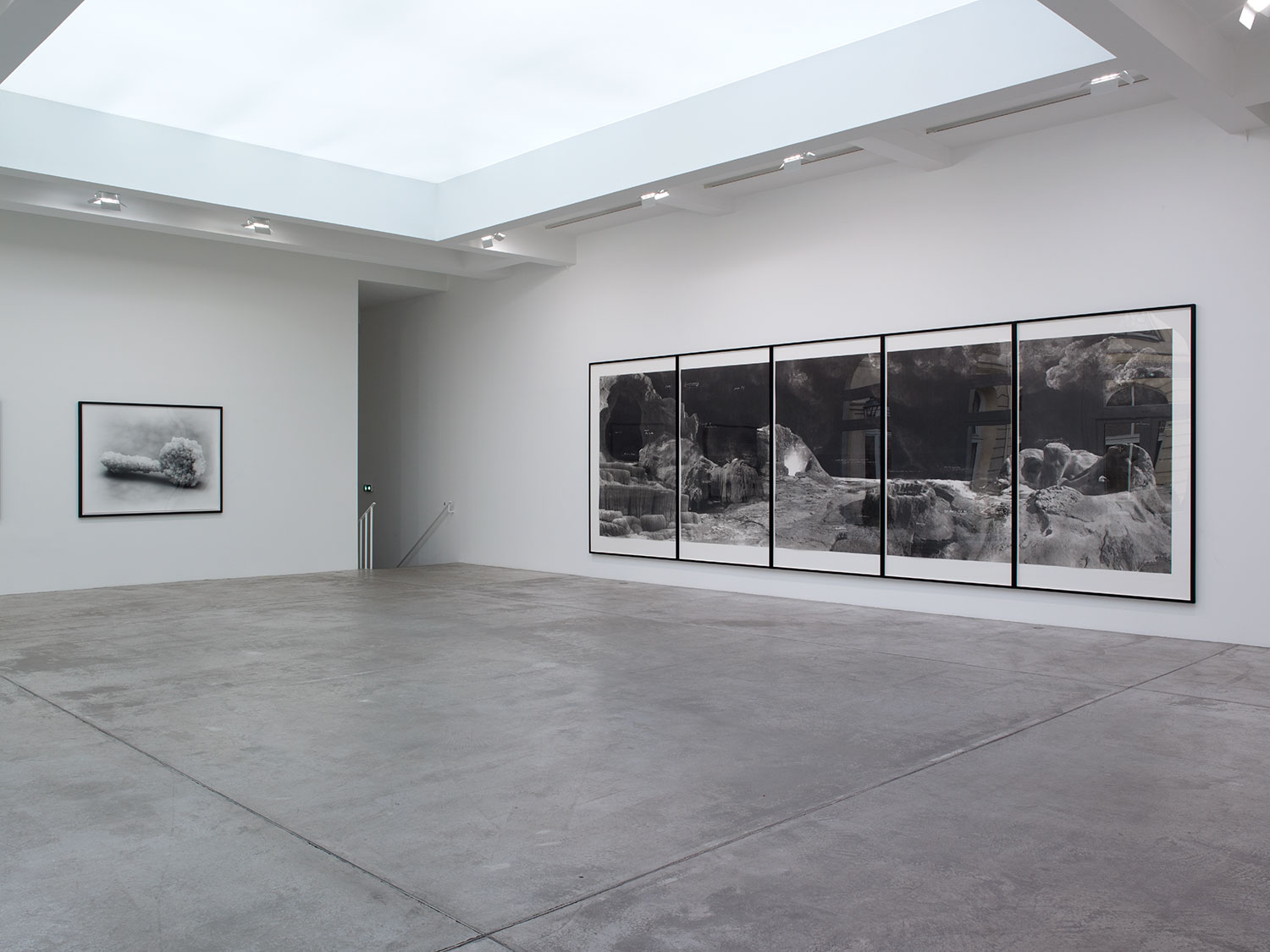Cerith Wyn Evans has developed a unique sculptural oeuvre over the past four decades. Either transposing movements, texts or sounds into luminous works or exploring the limits of visibility, Evans aims to engage the viewers along discursive paths, by questioning perception in relation to space, light, sound, language, and object. Interrogating “the realm of thought” and “the field of vision,” his multi-referential works play with spatial environments and promote multiple interpretations.
Since the creation of his first neon work in 1994, Evans has gradually used electrified glass tubes to draw in space. Both exhibitions in Paris and New York feature his latest series of large neon sculptures, which hang from the ceiling and are inspired by Frank Stella’s Black Paintings (1958-1960). In both venues, each of the Neon after Stella works (2022) take their geometric inspiration from a specific painting, as a literal transcription of Stella’s two- dimensional compositions into three dimensions, where black stripes are transposed into the intervals or voids between lines of white neon.
Postmodern in its approach, this series utilizes the Black Paintings as material, evacuating Stella from Stella, allowing a focus on the discourse the works provoked, rather than a de facto homage to the source material.
“The Neon after Stella series stages a distancing from Frank Stella’s Black Paintings to encourage a critical reflection on the notion of the ‘void’ and the ‘voiding of narrative,’ which these works brought about as one event in the death of painting at that time. Just as Samuel Beckett had spoken of having ‘nothing to paint, and nothing to paint with’ in his ‘Three Dialogues’ 1949, Stella’s Black Paintings occasion a bridge to nothingness,” writes Evans.
Suspended from the ceiling, the abstract neon works resemble veils, the empty space between lines of neon providing a partial glimpse through to the view behind. Viewed together, they evoke a palimpsest, with a hallucinogenic moiré effect achieved via the overlaying of the lines of light in the room.
Evans’ practice has frequently made reference to other artists such as Marcel Duchamp, Andy Warhol, Marcel Broodthaers, and others. His engagement with Frank Stella speaks to but one among a multiplicity of historical influences which, when transposed, creates a rupture and invocation towards a new form, a dematerialized context, or a reenacted cartography within Evans’ universe. And like other artists who famously engaged in acts of refusal, in order to live in and with negative space, this series, rooted in both citation and the refutation of narrative, conversely opens up the possibility for a new realm.
In Paris, a new installation of mobile sculptures will be shown in the lower gallery, featuring visor-shaped vehicle windscreens that are cracked and spotlit to create a multitude of refractions in motion. Reflecting on our daily interaction with screens, vehicles, computers and telephones, the phase shift (after David Tudor) works also draw upon chance procedure and perspectival plotting, referencing the nuanced history of Duchamp’s The Bride Stripped Bare by Her Bachelors, Even, (1915 – 1923) which following its first exhibition, broke while in transit. The uncanny cracks in the glass prompted Duchamp to embrace this event as part of the work’s final resolution, welcoming the cracks to ‘complete’ the work.
Longside the fissured glass panels stands StarStarStar/Steer (Transphoton VI) (2019), previously exhibited in the artist’s solo show at the Pirelli HangarBicocca in Milan. The LED columns light up according to a complex sequential lighting system, passing from a state of translucency to a penetrating brightness. When the light slowly decreases, the pieces change in appearance, allowing viewers to see through them but also to glimpse their component materials. Whereas their lines and verticality evoke Doric columns, the work contradicts the very idea of a column as it does not rest on the floor but is suspended from the ceiling.
In the Paris vaulted space, a new work, Sounding Felix (Paris 8 assemblage), (2022) pays a subtle homage to Félix Guattari. Created on the occasion of an international symposium devoted to the French psychoanalyst and philosopher at the Université Paris 8 – St. Denis in October 2022, this work features multiple elements, including a gong, transducer, telephone, lamps, chairs and mylar blankets.
At the New York Gallery, in conjunction with the Neon after Stella sculptures, Wyn Evans presents Katagami Screens, a series of works on paper from 2015 which refer to Japanese paper stencils used for dyeing and printing patterns on textiles. Often drawing on Japanese aesthetics and philosophy, Evans revisits this ancestral technique consisting of multiple layers of thin washi paper bonded with a glue extracted from persimmon, which results in a strong, flexible, brown-colored paper. Traditionally used in kimono printing, the paper stencils are stabilized by attaching them to a fine silk net. Staged in the show and suspended away from the wall, Evans’ Katagami Screens adopt a tectonic presence both dividing the space and casting imprints of their shadows. Light passes through the perforations as bleach would have traditionally.



